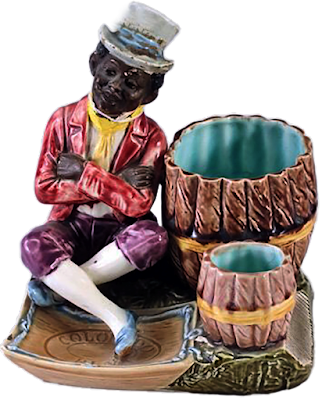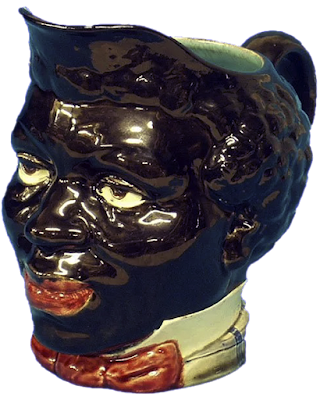The overwhelming majority of these are Continental in origin, most often French. Unlike American Black memorabilia of the period they are less likely to be insulting racial caricatures but they do show up nonetheless. Most are generally glazed the same way, with unglazed areas where the skin shows overpainted with brown paint. The rest of the figure is invariably glazed with traditional majolica glazes. Because these pieces have been painted after glazing it is common to have some paint loss in the skin areas. The more the paint loss the more it will affect price.
The exception to this overpainting is sometimes seen in the humidors where the faces are glazed with a matte brown glaze.
The majority of these figures will fit into one of three sub categories: smoking collectibles, decorative figures/servers or vases. The most common are the smoking collectibles.
Black figures were made to appear as match strikers, humidors and ashtrays. These are colorful and often amusing.
The final group is decorative figures or servers. Some of these, particularly the blackamoors, are quite large and costly. Most famous among the blackamoors are the Minton majolica Prince and Princess blackamoors. These almost life size candelabras were designed by A.E. Carrier Belleuse and are considered among the most valuable pieces of majolica in existence. They also came as pedestals. Only 12 pair are known to exist.
Sarreguemines majolica pitcher
Schiller & Son majolica pitcher
Minton majolica garden seat
Like any other type of cross-collectible, black memorabilia can get quite expensive. The pieces most sought after are those featuring Western Black attire and featuring some form of Black stereotyping like the figures eating watermelon. These will fetch a premium at auction. Figures in tropical or Middle-Eastern/African garb are less sought after by collectors.
This post has been edited and updated since it was first published































No comments:
Post a Comment